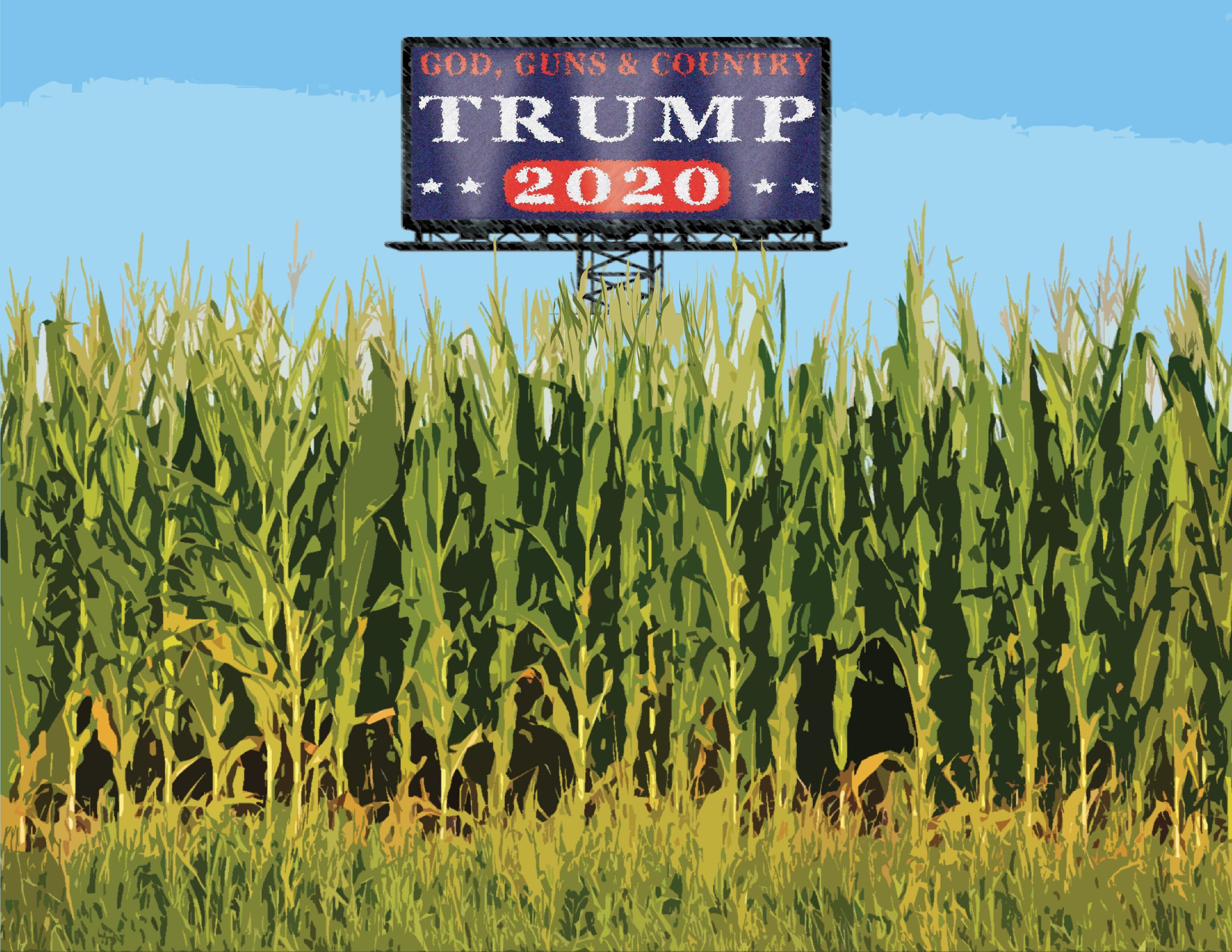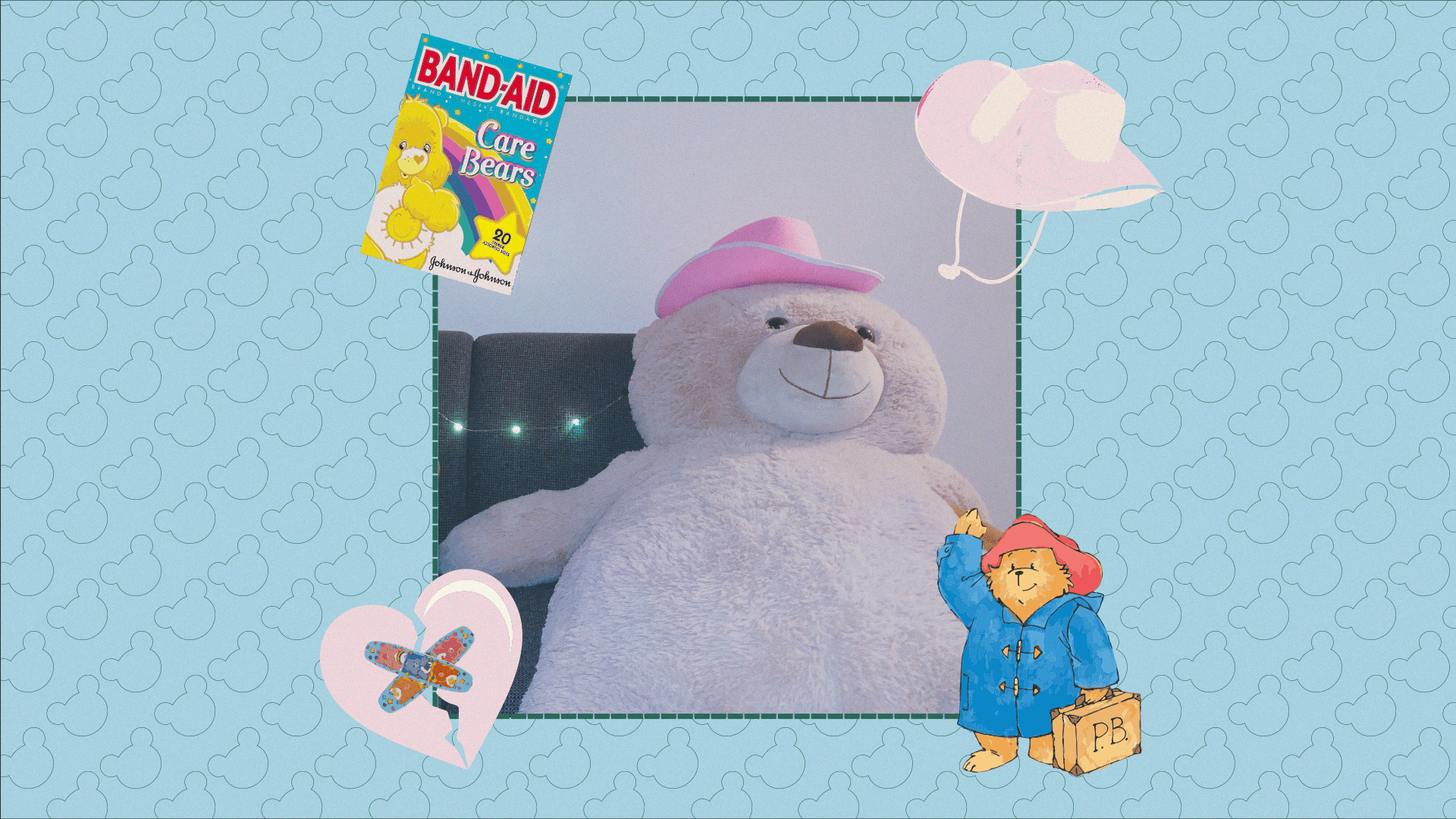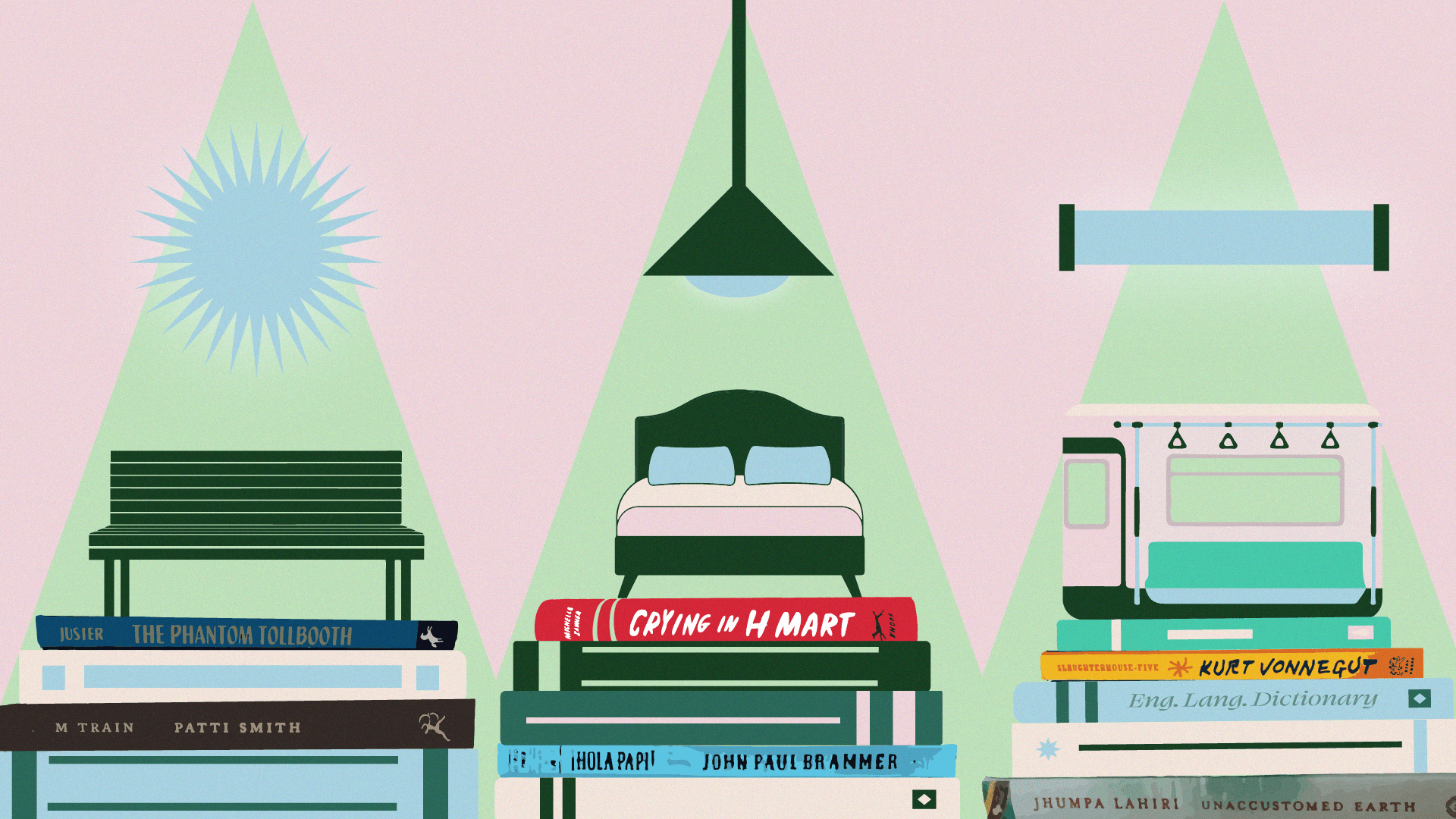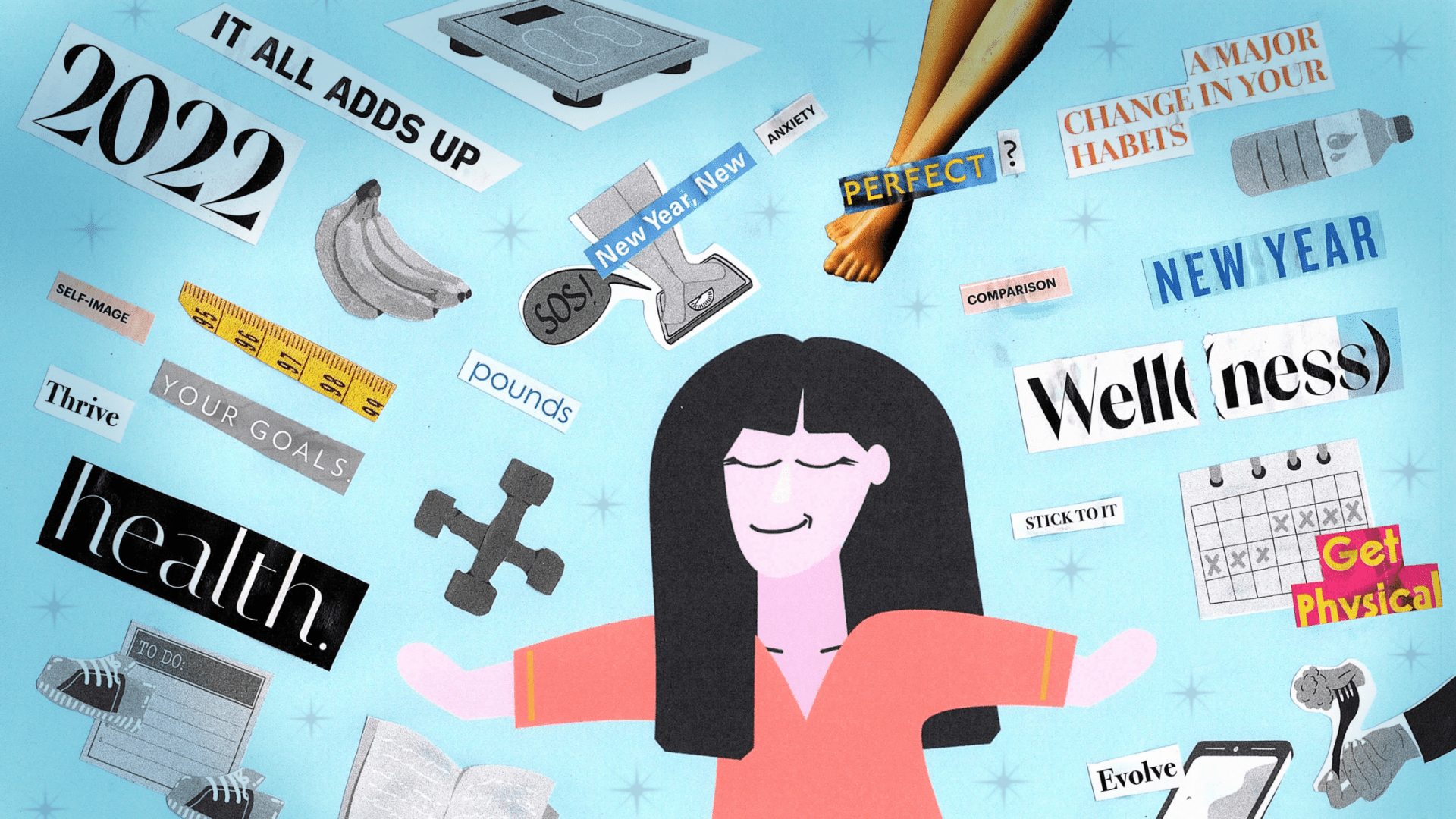
Cornfields, Trump Signs, and Black Fear
How spaces evoke meaning.
A scarecrow guarded the entrance of the Acme. It’s a mystery how Chalisse and I even found the supermarket. The entire shopping mall was nearly hidden by drooping trees. We wanted our weekend trip to add a touch of comfort to this unusual year indoors, so though the Acme seemed strange, it was the only store on our route. We needed to purchase food for our cabin stay in South Central, Pa.
Each aisle in the store felt more frozen than the last. But what chilled me the most was what I noticed the moment we pulled into the shopping mall: Besides Chalisse and me, there was not a single Black person around.
I didn’t mention my startling discovery to Chalisse. I was sure she had noticed it too. So, I quietly shivered through the aisles, carefully keeping watch for the chickpeas and bread, desperately searching for any trace of Blackness.
As we neared the back of the store, we found the pancake syrup and our long-awaited sign of relief: a Black girl and her mom. The girl wore box braids in her hair. Her mother did, too. Hallelujah! Two. It’s better than none.
Eventually, when we reached the register, we found the others. A tall, skinny Black man sporting a grey dad hat that matched the flecks of grey in his thick, charcoal colored hair. Another mother-daughter duo — this time riding store scooters.
3, 4, 5.
The cold temperature of the store now felt a few degrees warmer. It’s just this store. Our destination would be different.
We crossed over onto a highway towards Pennsylvania Dutch Country. Looming ahead was a colossal billboard. “God, Guns & Country” lined the top of the board in blood red. The rest of it was dominated by bold white lettering that read, “Trump 2020.” It reminded me of the moon. It seemed as if it were there at every turn, fixed in the sky. I set my gaze upon it. It looked down over us. It was hard to determine if it was the county’s welcome sign or a warning.
All of the subtle anxieties I had in the Acme now resurfaced — this time as a whirlwind of trepidation as I began to rethink our decision to come here.
Did Chalisse see that? What town are we in? Is our cabin going to be in a place like this one? Why did someone receive permission to put up a billboard like that? Does everyone here agree with it?
We had never been out this far but quickly noticed a theme. The nation’s flag was at the doorpost of every other home. And every home between those sported an 18-by-24 yard sign endorsing our current President’s 2020 campaign. Churches stood like checkpoints at the end of every two or three blocks and, somewhere in between, was a house with a 4 foot tall murky green sign. TRUMP was its only message.
It’s good that Chalisse and I didn’t break the tense atmosphere by playing a name-game that involved punches. Otherwise, we’d have to find an ER on our route for the damage I’d cause to her bicep tissue. She was the driver with her palms tethered to the wheel. I was the observer with free hands and what seemed like an anointing to spot every house with a flag.
The cornfields were the most disturbing part. They seemed to have no end. The drooping, sun-scorched stalks were the same pale-yellow as the scarecrow that stood watch over the shopping mart. None of it made sense because, scenically, it should have been beautiful. Internally, however, it was vexing. There were no signs of humanity for what felt like forever. Not one car partnered with us on the road.
“I hope we’re not the only Black people crazy enough to come out this far,” Chalisse said.
“Yeah. I pray our house is not in this area,” I replied.
“If so, we’re turning this car back around now!” Chalisse demanded.
If something were to happen to us out here, no one would hear of it. I prayed to God that we make it back.
In his article, The symbolism of place: a geography of relationships between space, power and identity, Jérôme Monnet explores the connection between symbols and meaning. Monnet, a Professor at Gustave Eiffel University and co-editor of a peer review journal titled, “Espaces et sociétés,” explains that signs and symbols “carry the meaning that an individual or a group has endowed them with.”
Trump signs, the American flag, and even guns are all symbols that people use to convey meaning. If you live in America, then these are cultural symbols. We understand the meaning of these symbols both within the broader “American” culture and through its boundless subcategories like ethnicity, race, state, city, town, suburb, and family.
Even as you read the symbols I’ve mentioned in this story, you assigned meaning.
And while the cornfields Chalisse and I drove by were not inherently symbolic, they still carried meaning for me while juxtaposed with the billboard and the many American flags we encountered.
The American flag, for some, symbolizes unity and freedom. So when someone who has this view of the flag chooses to display it outside of their home, they do so to demonstrate their love and reverence for their country.
As a Black woman, whenever I see the American flag or a Trump sign outside of say, a store, I can’t help but wonder if it is a sign of racism.
And I’m not the only Black person with this sort of interpretation.
Jessica Gooding, History and English major at the University of Pennsylvania, describes “the sight of an American flag” as “triggering,” in her controversial op-ed with the Daily Pennsylvania. Gooding, who writes often about the racial and political issues within her campus, her city, and the country, explains that her view of the flag is directly related to the racism she experienced from her late White grandmother. At a young age, her grandmother disowned her for being half-Black. Since then, the American flag pin her grandmother proudly wore would forever put a sting in Gooding’s memory.
Likewise, NPR asked around 1,800 Americans how they feel about the flag. Many people, particularly those of color or who identified as liberal, explained that “the American flag comes with baggage that can’t be ignored.”
America’s bags are heavy with four centuries of hostility towards Black people. It’s a weight that gets heavier with each passing year.
And while the flag in and of itself isn’t a hostile symbol, many of Us have often heard others pledge their allegiance to it and add a hefty, “If you don’t like it, go back to your own country.”
But whether it’s the flag, the love for guns, or the Trump 2020 signs, all of these symbols tied together have one underlying meaning: Power.
Think, the desire for power, assertion of power, or abuse of power.
That’s why Chalisse and I felt gravely uneasy as we drove through the hyper-patriotic suburb. Physically, we were only but an hour from home. Symbolically, we had crossed over into a “place of power,” as Monnet calls it. A place of privilege, even.
Power and privilege. Two things that neither Chalisse nor myself had as long as we occupied this space. Things Breonna Taylor, George Floyd, Elijah McClain, and the hundreds of Black men and women who were unjustly killed by White men did not have at the time of their murder. Things that the place of power has not granted to them even in death. Not power, not privilege, and certainly not justice.
After what seemed like an eternity of passing through the Get Out country, we came by a Sunoco that was surrounded by six American flags. This was not a sign of hope, but it also wasn’t a cornfield. It was evidence that civilization was on the horizon.
As we continued to drive we uncovered other tokens of hope — a Qdoba and an Adidas store that signified diversity and familiarity.
Finally, we saw our biggest banners. Two Black teens. The boy on the left strutted in a white tee with black joggers and electric blue sneaks. His natural coily hair was gathered into a high puff that bounced as they strolled, unbothered, past the restaurants along US-30.
Our feelings of relief were even greater than they were back at the Acme.
Alexa: sing ‘Hallelujah, I am not alone.’
Seeing these teens here, dressed like that meant that maybe this place was mildly okay for Black people. Maybe we weren’t the only Black people crazy enough to come out this way for a weekend. Some are crazy enough to live here permanently.
“I guess every Black person has to drive through Halloween-town to get here,” Chalisse exclaimed.
After a stressful and rigid two hours, I could finally allow my shoulders to recline as we completed our final twelve minutes towards our weekend vacation. I could rest assured that, no matter what, we were only twelve minutes from a Qdoba, an Adidas store, and two Black teens proudly living out their Blackness.
I think we’ll be safe.


